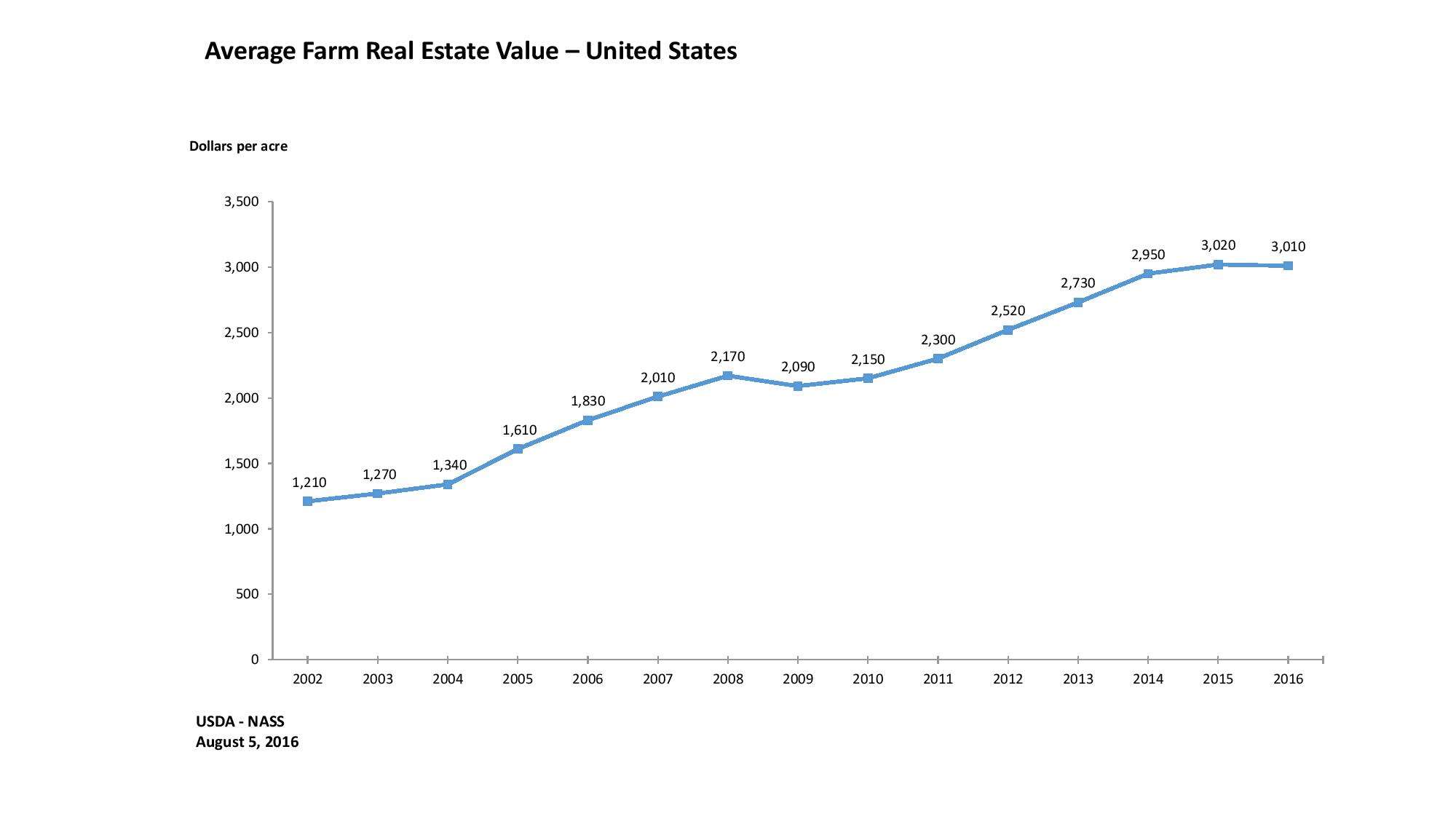Average price per acre appears to be down across the United States
By Diego Flammini
Assistant Editor, North American Content
Farms.com
The United States Department of Agriculture released its latest figures on farmland values, and the average price per acre of land across the country has dropped.
The August 5 report shows that in 2016, the average price per acre is $3,010, down $10 from 2015. This drop in average price is the first since 2009.

Around the Corn Belt, average farm real estate values are down across most states.
In Iowa, the average price per acre is $7,850, which represents a 1.9 per cent drop from 2015.
In Illinois, the average price per acre is $7,400, a 1.3 per cent decrease from 2015.
Indiana remains unchanged at $7,150 per acre.
Ohio’s average price per acre of farmland is $5,700. That’s down 0.9 per cent from 2015.
Missouri was one of the only states around the Corn Belt to experience increases in land values. Its average price per acre is $3,400, which is up 1.5 per cent from 2015.

The state that experienced the largest increase is Oklahoma. According to the report, farmland is valued at $1,800 per acre, a 5.9 increase from 2015.
Washington also experienced a 5.6 per cent increase from 2015 to $2,850 per acre.
The largest decrease in value happened in Kansas. The current value is about $1,880 per acre, a 7.4 per cent drop from 2015.